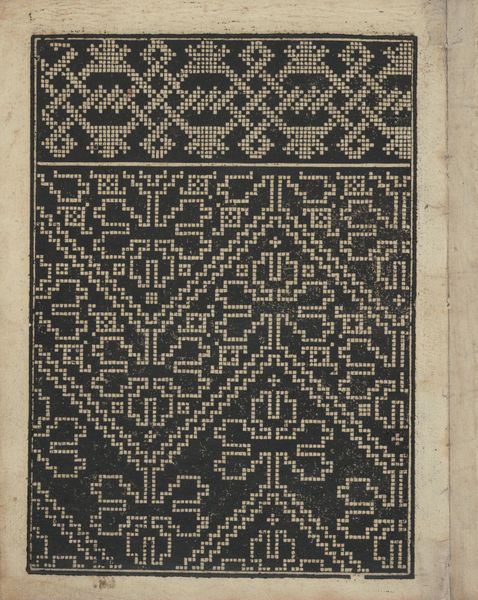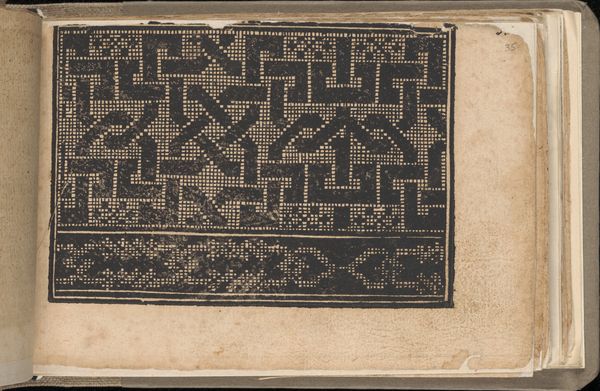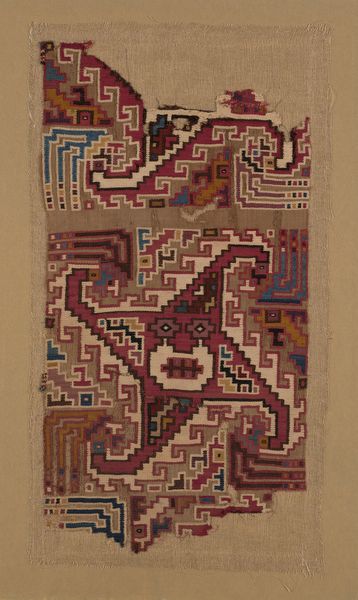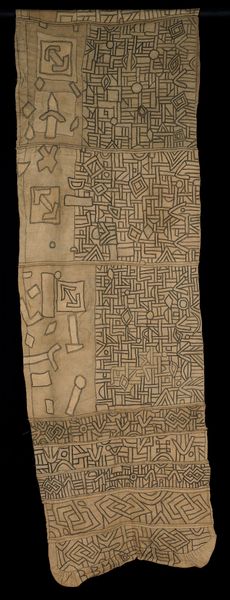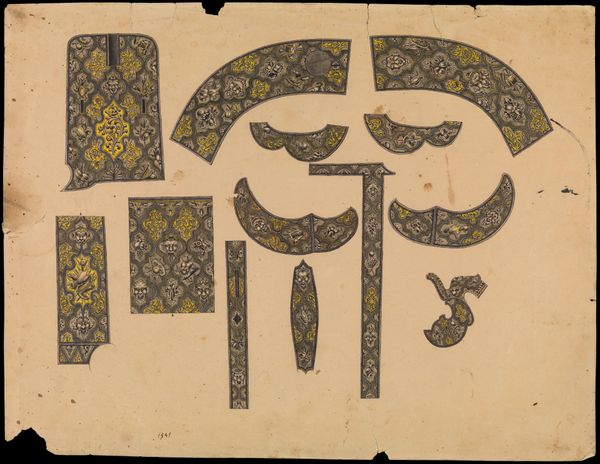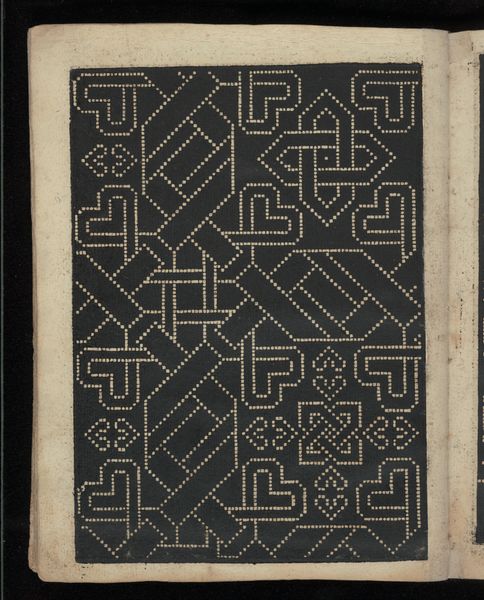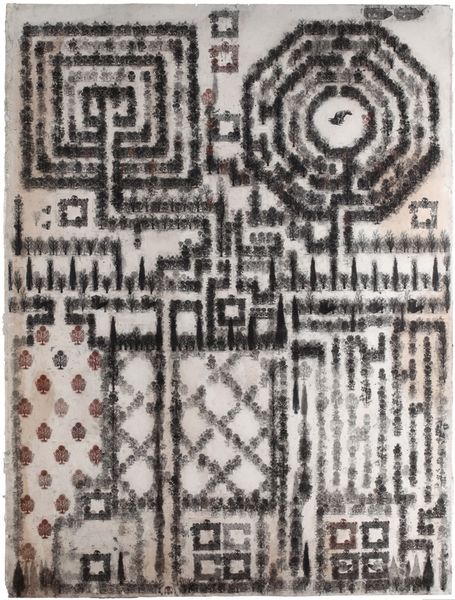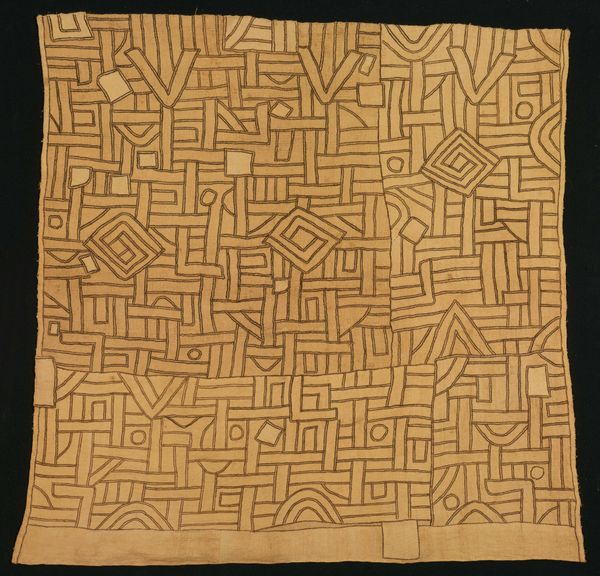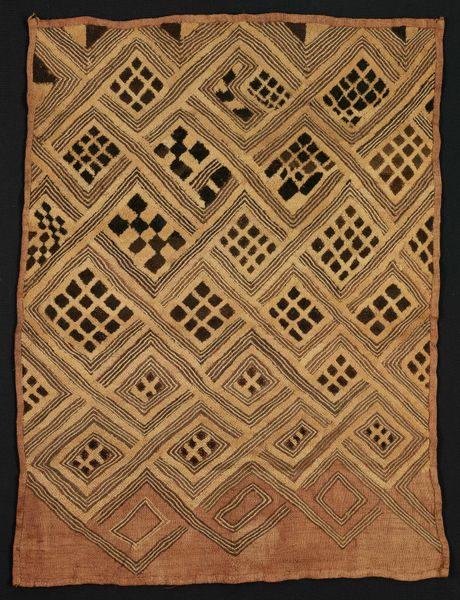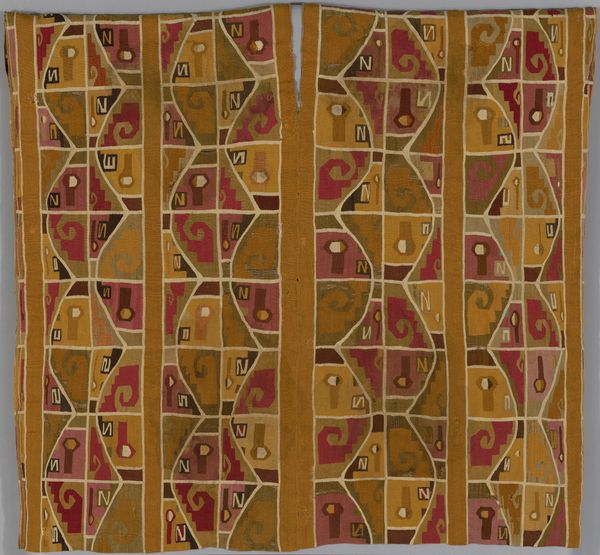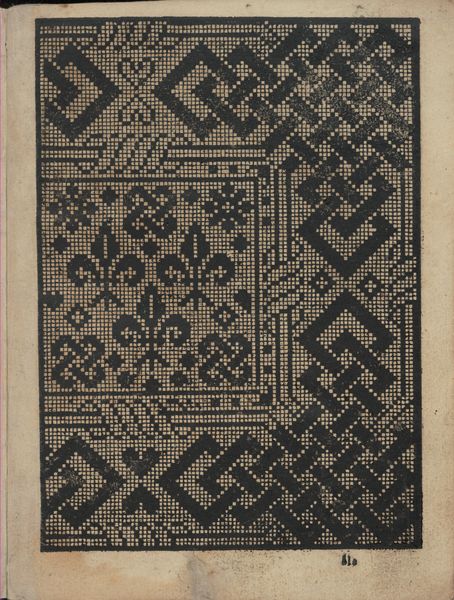
textile
#
textile
#
geometric
Dimensions: 23 1/4 x 32 in. (59.06 x 81.28 cm)28 3/4 x 38 7/16 in. (73.03 x 97.63 cm) (mount)
Copyright: Public Domain
Curator: Alright, let’s dive into this "Appliqué panel" created by an artist from the Kuba Kingdom, and housed right here in the Minneapolis Institute of Art. The exact date is unknown, but its impact feels timeless. Editor: My immediate reaction is how soothing these earthy tones are! The arrangement has a strangely playful rhythm to it. I want to reach out and feel the texture, understand the weave. Curator: Well, that tactility is core to these pieces. Crafted using the appliqué technique, the panel demonstrates remarkable skill in textile artistry. Appliqué, for those unfamiliar, is where pieces of fabric are sewn onto a larger backing to create designs, like quilting but with more flexible forms. Here the contrasting shades really pop. Editor: Contrast is definitely at play! It also brings to mind questions around labor, you know? These weren’t just aesthetically pleasing designs; someone spent hours, days, carefully stitching these elements together, transforming utilitarian materials into something profoundly meaningful and expressive. It transcends "craft" and speaks of deep cultural practice. Curator: Absolutely. Kuba textiles weren’t simply decorative; they functioned as markers of status, ritual objects, and records of cultural knowledge. The geometric patterns aren't random, you know, often conveying stories, proverbs, and social standing within the community. Editor: It’s such a powerful reminder that what we see as "art" is almost always inextricably linked to larger social structures. Here, the Kuba used material and skill to broadcast status, express creativity, and embody community. What an intense form of messaging— and done through pattern. Curator: And beyond status, they possess a beautiful, quiet power that whispers stories of community and resilience across time. I find this panel so incredibly poetic and powerful in its quietude, somehow both modern and ancient all at once. Editor: It’s a piece that asks us to really look, feel the history in each stitch, and contemplate the dedication embedded in every detail, challenging the distinctions we often make between fine art, craft, and pure decoration.
Comments
No comments
Be the first to comment and join the conversation on the ultimate creative platform.

